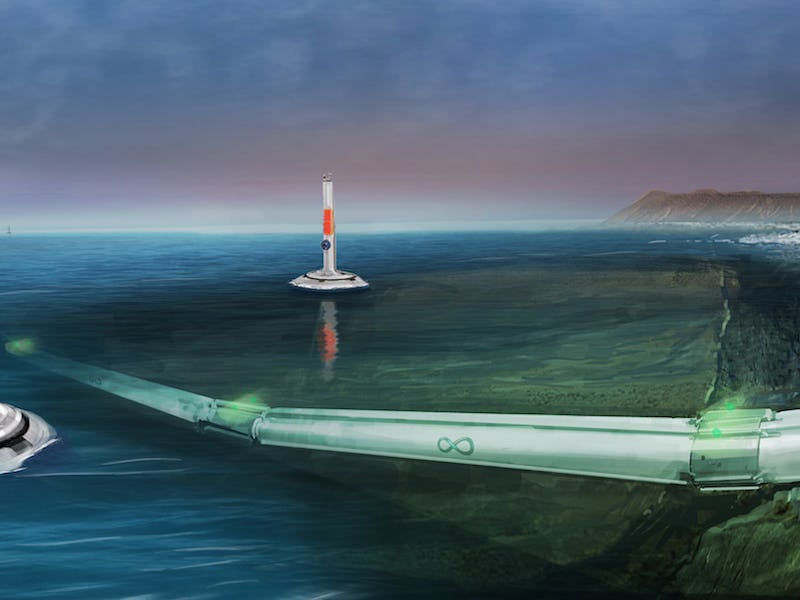Can Brogan BamBrogan Really Build an Underwater Hyperloop?
The company is heavy on hype and light on details — for now.

On Friday, Hyperloop One co-founder and CTO Brogan BamBrogan announced his plans to put his company’s transportation systems all over the planet. Hyperloop One’s hyperloops will be above-ground, but BamBrogan also wants to see them underground — and even underwater. But how feasible is that dream?
Hyperloops will revolutionize transportation: the travel time from San Francisco to Los Angeles, for instance, would be just half an hour. But everything is still in development, and even if or when the technology is perfected, hyperloop companies will need to acquire land upon which they can build the train of the future. If the hyperloop is above-ground, as Elon Musk imagined it to be, land rights may be easy to acquire. (Musk, in his original proposal in 2012, wrote: “By building it on pylons, you can almost entirely avoid the need to buy land by following alongside the mostly very straight California Interstate 5 highway, with only minor deviations when the highway makes a sharp turn”). If it’s underground, that’s another story: even if you have a train that goes the speed of sound, you can’t just rampantly dig tunnels around the world.
Elon Musk's proposed route for a hyperloop from San Francisco to Los Angeles.
Underwater seems like a natural second option. Whether or not that would make it any easier to acquire land-usage rights, BamBrogan and Hyperloop One will still face significant challenges. Marine life doesn’t take too kindly to foreign incursions, let alone permanent installations. Google, for instance, had to start wrapping its underwater fiber-optic cables in kevlar to prevent sharks from inexplicably biting through and disrupting the connections.
Though a subaquatic hyperloop’s structural features would presumptively be more robust than a fiber-optic cable, the company may need to consider vindictive animals. And these oceanic life forms will have reason to be vindictive. The construction alone would be enormously disruptive, and the presumptive additional noise pollution would have a consistent impact.
We have two other instances of enormous underwater undertakings. The United Kingdom’s Channel Tunnel and Japan’s Seikan Tunnel are respectively the deepest and longest underwater tunnels in the world. Engineers drilled both tunnels through the seabed: Due to the overwhelming pressure at such depths, the tunnels aren’t actually situated “underwater.”
Hyperloop One’s concept sketches show it nebulously emerging from the earth and extending into the watery depths.
A company rep tells Inverse that BamBrogan et al. are “not sharing details at this time about their underwater efforts.”
That could mean they’re keeping it under wraps, but it could also mean that it’s little more than than a dream — for now, anyway.